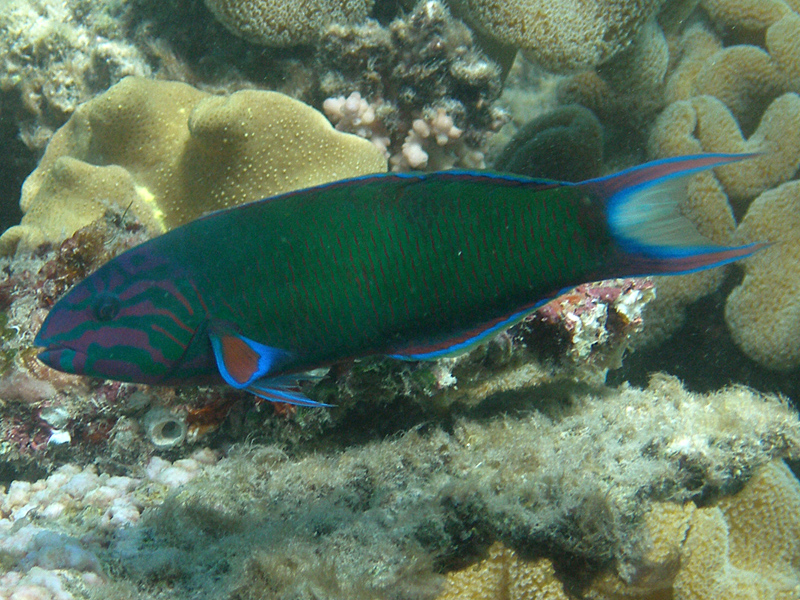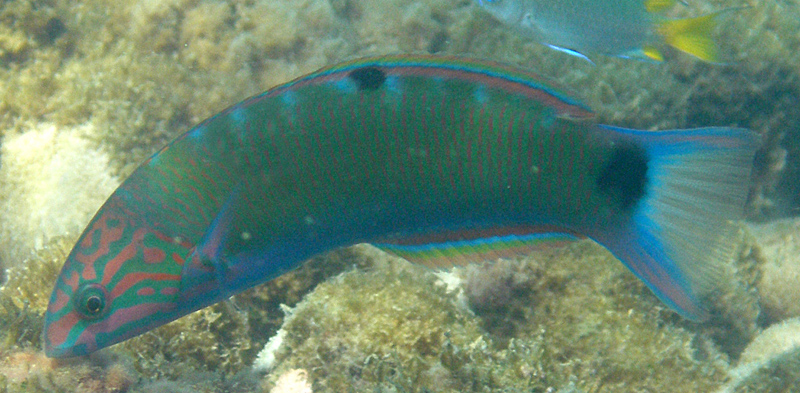
©Andy: A newly settled Moon Wrasse in an Acropora coral. The fish on the right is a Goldstripe Butterflyfish.
Colours
Distinguishing features
A small elongate fish that swims very quickly using the pectoral fins. The fish is mainly green with pink lines on the head and a distinct pink patch in the pectoral fin. The terminal phase male is similar but with a blue wash over the head region.
Size
- Up to 20 cm (Standard length)
Depth range
- Depth range data is not yet available.
Synonyms
Similar taxa
-
Animalia:
Green-moon Wrasse (species: Thalassoma lutescens)
The pectoral fins are the key: they are blue with yellow in Thalassoma lutescens and magenta with blue in Thalassoma lunare. (John Turnbull)
Interesting facts
- At Lady Elliot Island, they clean parasites off Reef Manta Ray when the Mantas come in to coral bommies for cleaning.
Distribution
Distribution and habitat preferences
Usually near areas of hard coral cover in sheltered lagoonal habitats.
Can be found in most locations around the island.
Behaviour
The moon wrasse is common throughout the GBR, and is a very successful generalist feeder, able to occupy a wide range of habitats. It feeds primarily on small invertebrates picked from the substratum, but it will also feed on plankton, and the eggs of demersal nesting damselfish. It has also been observed to coordinate group hunting behaviour, where small packs of moon wrasse will isolate individual Cardinalfish juveniles from schools, and then attack and eat them. This species spawns in groups around sunset, where the brightly coloured males display to the duller females. Like all wrasses, this species changes sex from female to male as they get older.
Web resources
References
- Bellwood, D.R. and P.C. Wainright (2001). Locomotion in labrid fishes: implications for habitat use and cross-shelf biogeography on the great barrier Reef, Coral Reefs, 20: 139-150. LIRS catalog number 787.
- Emslie, M.J. and G.P. Jones (2001). Patterns of embryo mortality in a demersally spawning coral reef fish and the role of predatory fishes, Environmental Biology of Fishes, 60(4): 363-373. LIRS catalog number 671.
- Fulton, C.J., D.R. Bellwood and P.C. Wainwright (2001). The relationship between swimming ability and habitat use in wrasses, Marine Biology, 139: 25-33. LIRS catalog number 657.
- View all references





